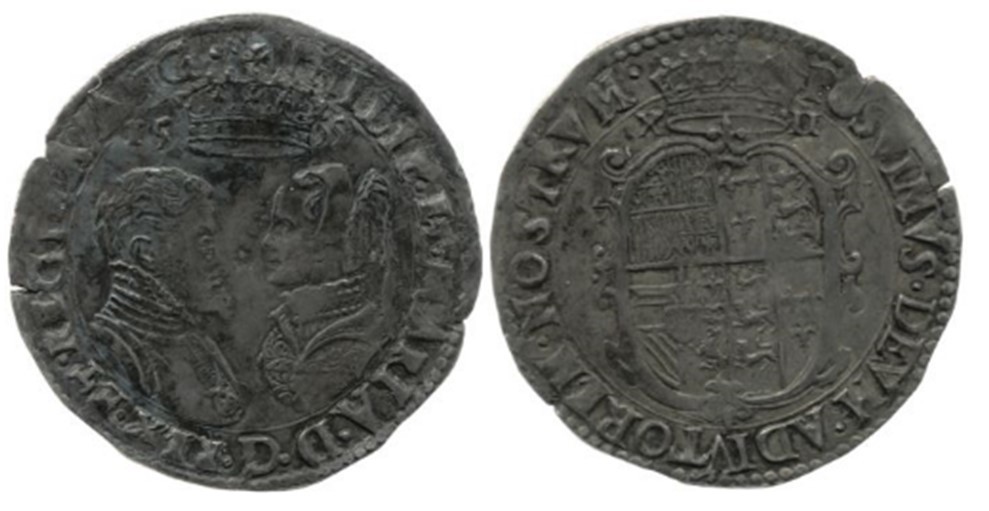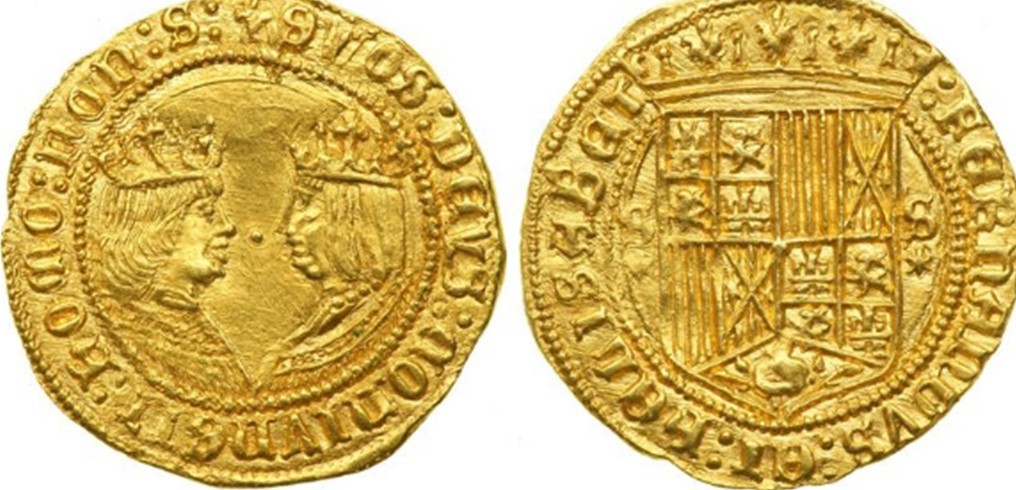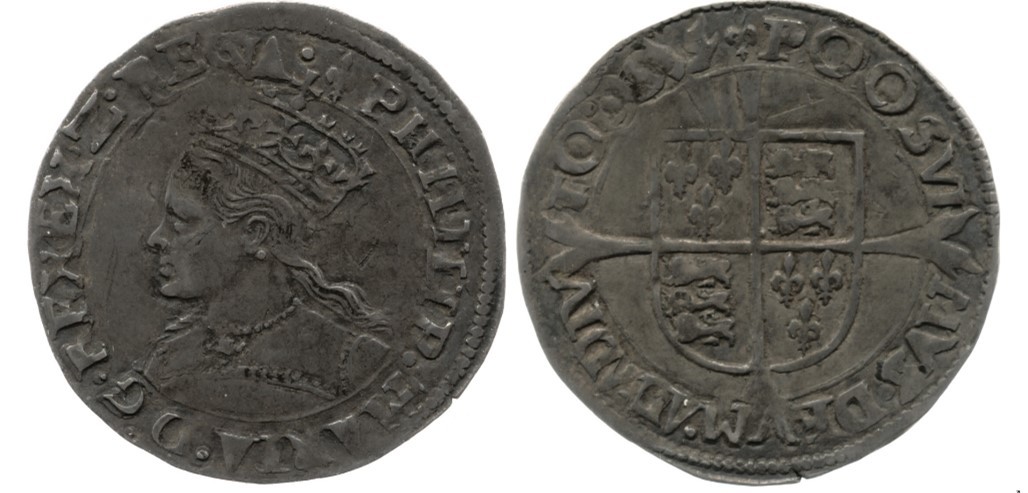The Iconography of Mary I, England's First Crowned Queen Regnant
Chapter 3 : Coinage
However, portraiture and medals were not accessible to the majority of Mary’s ordinary subjects. This is where coinage filled the void. Coins were the most common form of imagery in the early modern period. Even if people could not read the pamphlets nor the books published describing their queen, they would be able to understand the iconography on coinage. As today, everyone had possession of a coin at some point in their life whether it was a penny or a gold sovereign. This is where Mary could show her queenship to the majority of the populace. A gold sovereign shows Mary enthroned in her divine state. Around the coin is text depicting her title. She has loose hair symbolising her virginity while dressed in loose robes; perhaps parliamentary or coronation. She holds the sceptre and orb symbolising her spiritual and earthly temporal power. On the reverse is the English coat of arms implanted into a rose which have fleur de lis intertwined within the rose. This signifies not only her lineage, but her historic claim as Queen of France.
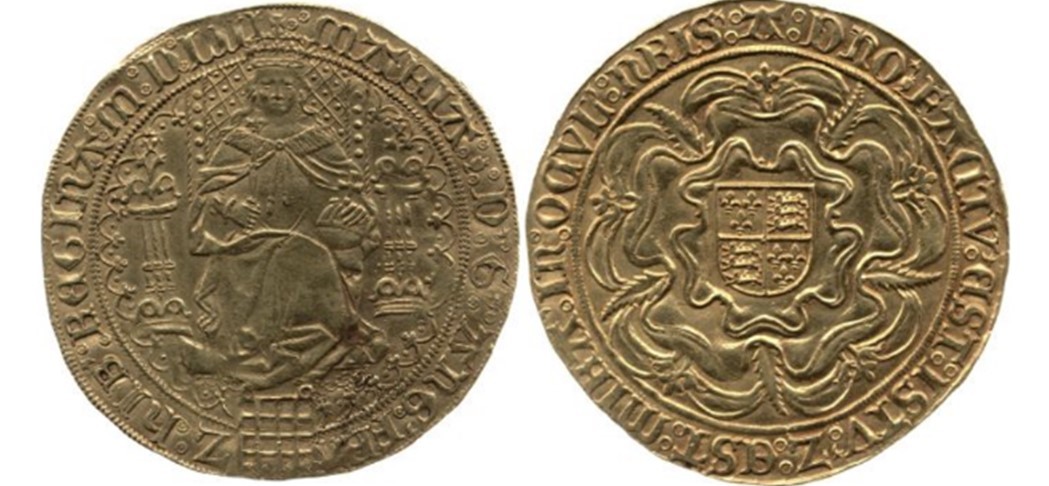
Coins for those less wealthy were the silver groat. In 1553-4 the groat obverse shows Mary as an Imperial Empress. Mary wears a closed crown signifying her independent and autocratic power while her loose hair symbolises her virginity. She wears a plain French gown with a necklace of pearls with what looks to be a pendant with four pearls attached in the form of a cross. Perhaps this is the Tau Cross? On the reverse is her motto Veritas Temporis Filia ‘Truth is the Daughter of Time’ and the English coat of arms.
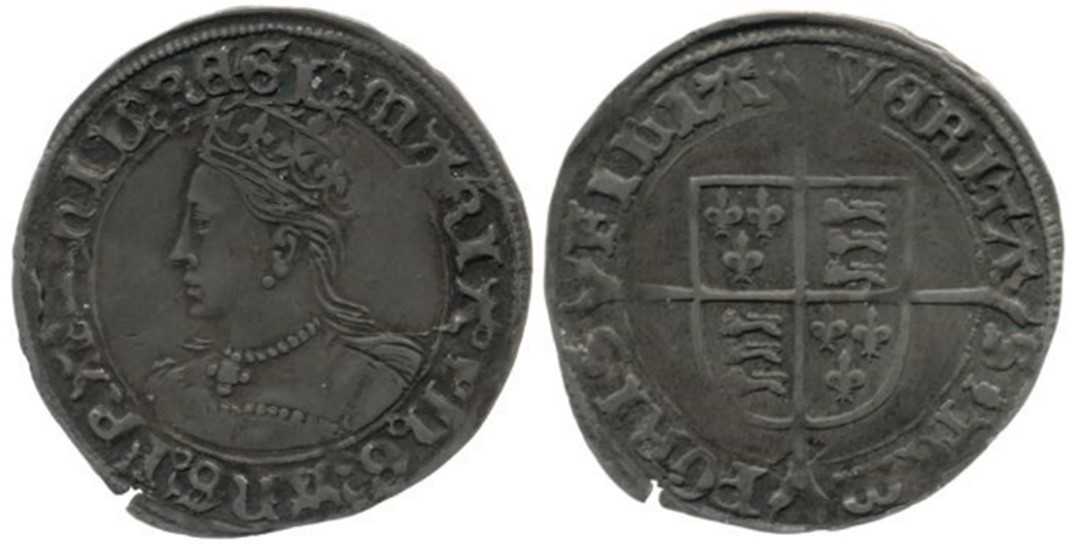
Mary’s first shilling continues to use the same design as the groat, but the facer is slightly different. The reverse depicts a crowned harp with a crowned M and R. There is no escape the fact that Mary is queen. Once again her motto VERITAS TEMPORIS FILIA is present.
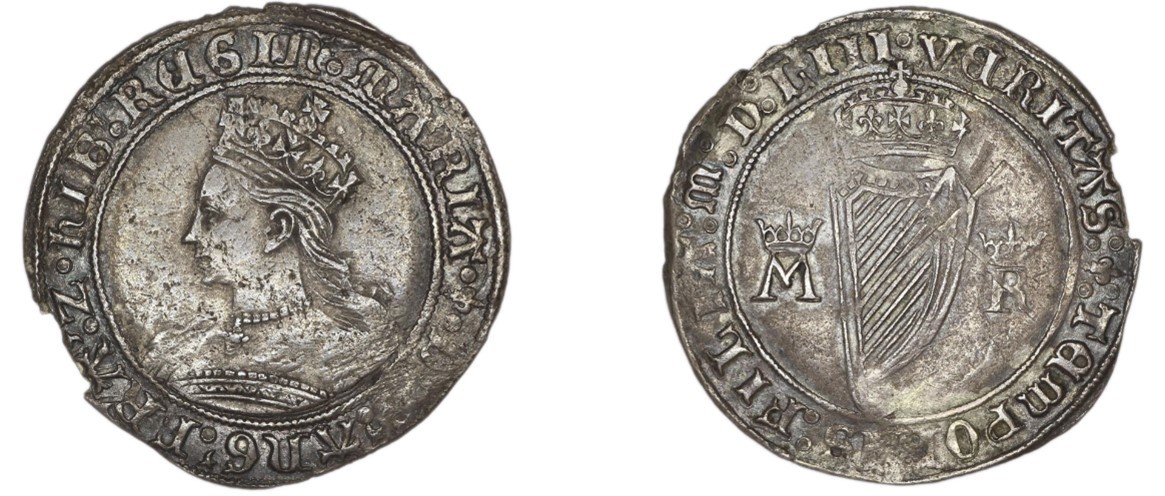
After Mary’s marriage to Philip II in 1554, there is a change in iconography in terms of coinage. The shillings altered considerably with the introduction of Philip being represented, but the groats did not include Philip’s profile. If this was the norm then it suggests that the lower denominations of coinage had no need to acknowledge Philip in the same way as higher denominations; the furthest inclusion Philip receives is his name. Though it assumed that Philip’s presence demoted Mary this is not the case. Mary is taller that Philip signifying her position in England. What is also of note is that Mary holds the same position as her grandmother, Isabella of Castile, in the joint coinage with Ferdinand of Aragon.
